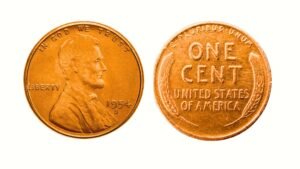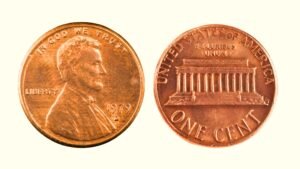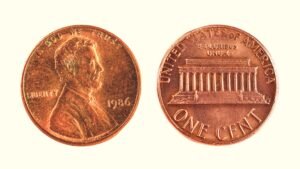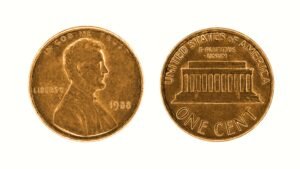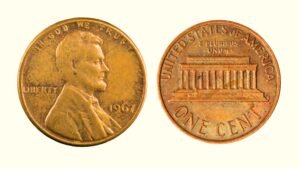Imagine finding a penny worth $4,000 in your pocket change. Sounds like a dream, right? But it could be a reality if you have a 1980 Lincoln Penny! Although the coin might seem ordinary, it has certain hidden features that can command premium prices from coin collectors!
So, if you want to find out whether your 1980 Lincoln Memorial Cent is a hidden gem, this guide is for you! From mint mark mysteries to mind-bending errors, this guide will explain all potential features that can manifold your small cent’s value more than you think!
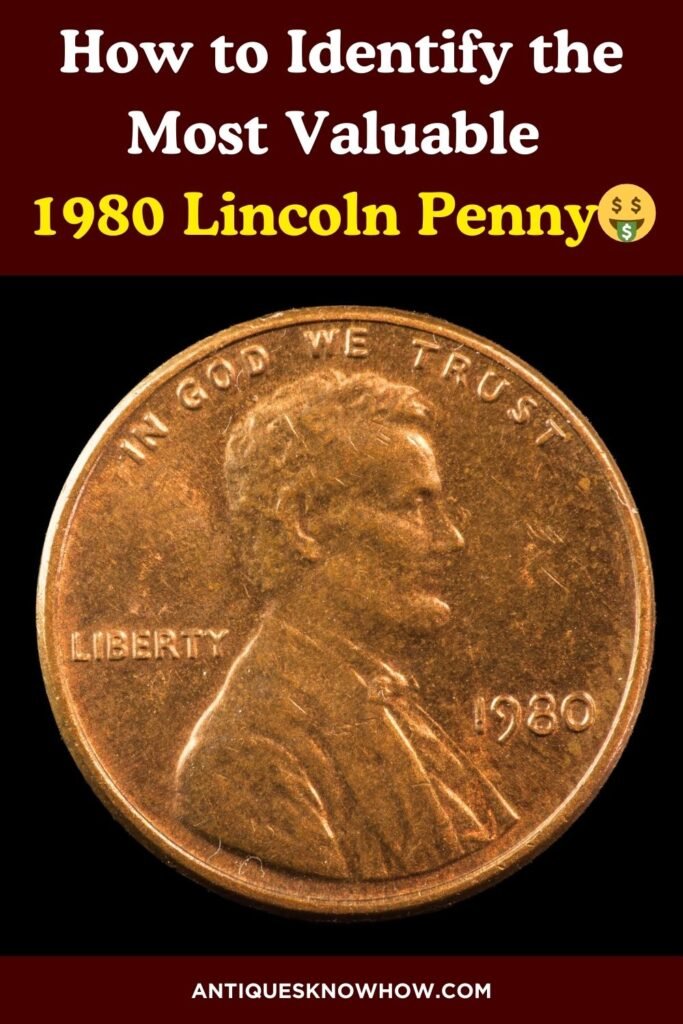
1980 Lincoln Memorial Cent History
The 1980 Lincoln penny is a part of the series first introduced in 1909 to commemorate the centennial of President Abraham Lincoln’s birth. While the original Lincoln Penny featured wheat stalks on the reverse, the 1980 cent features the Lincoln Memorial since the design was changed in 1959.
In 1980, the U.S. Mint produced the Lincoln penny in large quantities, minting over 9.7 billion coins. Today, the 1980 Lincoln penny is collectible due to its high demand and for being one of the last pennies to use the traditional bronze alloy composition, which was changed to copper-plated zinc in 1982.
| 1980 Lincoln Memorial Cent | Key Features & Facts |
| Coin Composition | 95% Copper, 5% Tin and Zinc |
| Minting Location | Philadelphia, Denver, San Francisco |
| Minting Year | 1980 |
| Face Value | 1-cent (0.01$) |
| Weight | 3.11 grams |
| Diameter | 19.05 mm |
| Thickness | 1.52 mm |
| Designer | Victor David Brenner, Frank Gasparro |
| Mint Marks | D – Denver Mint, S – San Francisco Mint, No Mint Mark – Philadelphia Mint |
| Total Mintage | 9,797,658,466 coins |
Understanding a 1980 Lincoln Penny Design & Composition
Spotting a real 1980 Lincoln Memorial penny requires examining its design on both sides, composition, and dimensions. Here is an overview of these key features:
1980 Lincoln Penny Obverse:

- A right-facing profile of Abraham Lincoln
- “LIBERTY” to the left of Lincoln’s portrait
- The words “IN GOD WE TRUST,” along top edge
- The mint year “1980” to the right of Lincoln’s portrait
- The mint mark, if present, below the mint year
1980 Lincoln Penny Reverse:
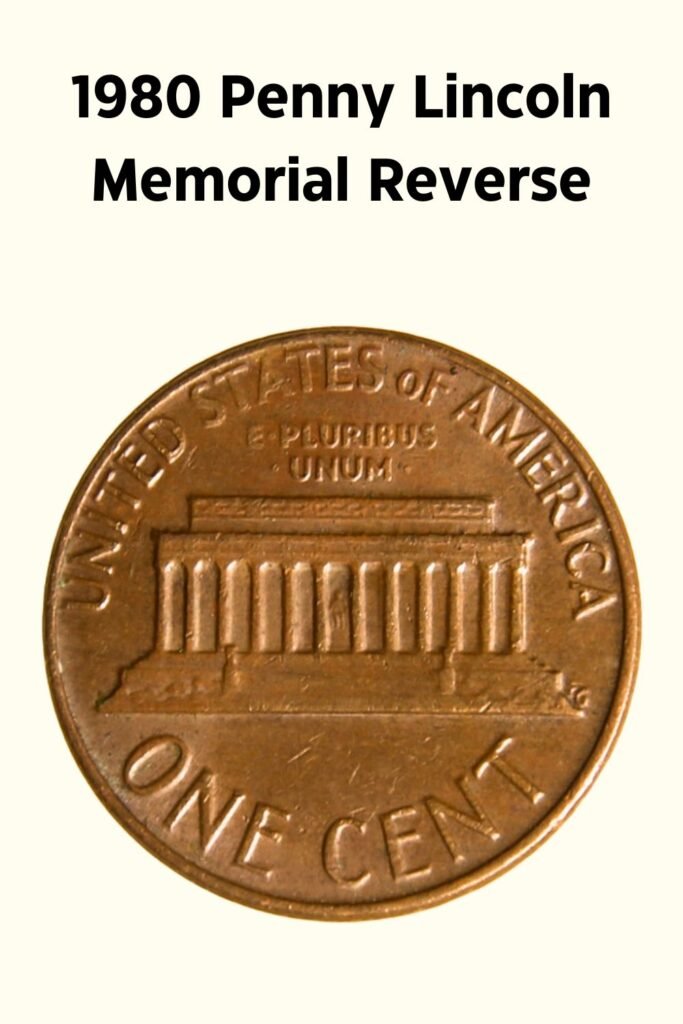
- The Lincoln Memorial building at the center
- The denomination “ONE CENT” above the building
- The word “E·PLURIBUS·UNUM” across the top
- “UNITED STATES OF AMERICA” along the bottom rim
- The Designer’s initials “FG” on the right side of the Memorial
Coin Composition and Dimensions
The composition of a 1980 Lincoln Memorial Cent is of bronze alloy, which is 95% copper and 5% zinc. This composition gives the penny its unique reddish-brown color and a specific weight of around 3.11 grams.
As for its dimensions, the small cent has a diameter of 19.05 millimeters and a thickness of 1.52 millimeters with a plain edge.
4 Key Factors to Assess a 1980 Lincoln Penny Value
The average value of a 1980 Lincoln penny in circulated condition is about $0.01 to $0.10. However, uncirculated coins or those with rare features can reach up to $2,000 to $3,000 or more, based on grades, mint marks, and errors.
Let’s understand these features and factors in detail:
1. Coin Grading and Condition
The value of a 1980 Lincoln cent largely depends on its condition, which is professionally graded on a scale from Poor (P-1) to Mint State (MS-70). Higher grades, like MS-67 and above, can significantly increase a penny’s value. For example, an MS-67+ 1980 penny once sold for over $2,330 in a coin auction!
You can also assess your 1980 Lincoln cent condition by observing its details, luster, color, and sharpness on both sides.
2. Coin Toning & Color
The appearance of a 1980 Lincoln penny can change from bright copper-red to brown due to toning and oxidation, which affects its value. The three primary classifications of a Lincoln Penny colors are:
- Red (RD): These 1980 cents have at least 95% of the bright red tone and are the most desirable ones. An uncirculated RD penny can be worth $5 to $200 or more for high grades.
- Red-Brown (RB): Pennies with a mix of red and brown tones are graded RB. They are less valuable than pure red coins but can still fetch around $2 to $50.
- Brown (BN): Brown pennies are those that have turned totally brown due to oxidation. Generally the least valuable, these cent coins are often worth only a few cents unless in high grades.
3. 1980 Penny Mint Marks & Mintage
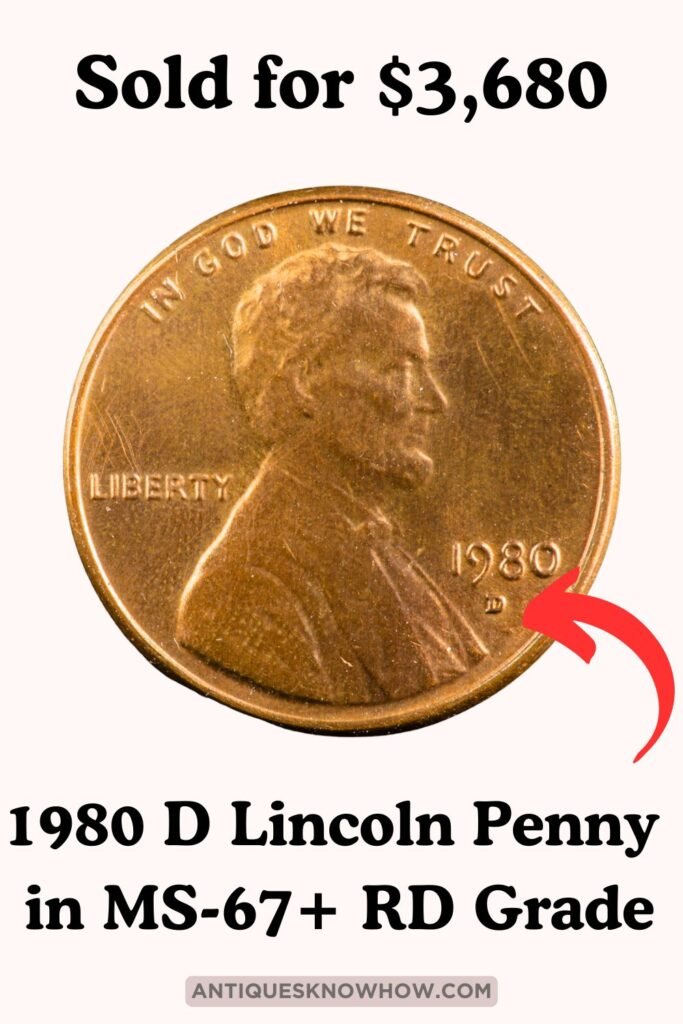
The 1980 Lincoln penny was minted at three locations: Philadelphia, Denver, and San Francisco (S). Each mint’s version varied based on mintage and other features, affecting the coin’s value.
1980 No Mint Mark Penny
Around 4,653,915,000 no mint mark pennies were produced at the Philadelphia Mint. In circulated condition, these coins are worth only $0.01, but uncirculated examples can reach up to $5 or $250 or more.
1980 D Lincoln Penny
The Denver Mint struck almost 5,140,098,660 Lincoln pennies in 1980. A 1980 D penny also sells for about $0.01 in circulated condition, with examples in high uncirculated grades fetching up to $100 to $250.
Here is a quick 1980 Lincoln Penny value chart based on common mint marks and grades.
| Coin Grades | Condition Details | 1980 No Mint Mark Penny Value | 1980 D Lincoln Penny Value |
| Poor (0) to Extremely Fine (XF45) | Significant wear, faded but visible details | Face Value | Face Value |
| Almost Uncirculated (AU50) to Mint State (AU58+) | Slight wear on highest points, visible marks or blemishes | 20 cents to 50 cents | 10 cents to 30 cents |
| Mint State (MS60 – MS64) | Uncirculated with minimal wear | $1 – $5 | $1 – $10 |
| Mint State (MS65 – MS66+) | Nearly flawless with very minor imperfections | $10 – $30 | $10 – $40 |
| Mint State (MS67 – MS67+) | Well-preserved with no major flaws | $50 – $2,350 | $50 – $250 (MS67) |
| Mint State (MS68 or Above) | Nearly perfect, luster, no major marks or flaws | N/A | N/A |
1980 S Lincoln Penny Proof Strike
The San Francisco Mint produced around 3,554,806 proof 1980 pennies for collectors. These special coins featured a higher-quality finish with a shiny mirror-like background. Due to its unique design and low mintage, 1980 S penny proofs can be more valuable than regular pennies.
Besides, the 1980 proof pennies are also designated in the following categories:
- Regular PR Proofs: These 1980 S penny proof coins have the standard proof finish. Although more valuable than standard cents, the value ranges from $5 to $10.
- Cameo Proofs (CAM): These proof coins exhibit a contrast between the frosted design and the shiny background. These can be more valuable, with prices often exceeding $20 for high grades like PR-68.
- Deep Cameo Proofs (DCAM): Also known as Ultra Cam, these coins feature the sharpest contrast between the frosted and mirrored surfaces, making them the most valuable. While they’re generally worth around $30, PR-70 examples can easily fetch $1,000 to $3,500 or more.

4. Rare Mint Errors on a 1980 Lincoln Cent
Certain mint errors that occur to a single 1980 Lincoln Cent coin or a group during the minting process can also impact its value. Here are some notable 1980 penny errors to find:
Double die obverse (DDO, FS-101)
Double Die Obverse occurs when a 1980 penny’s obverse die is misaligned during the rubbing process, resulting in a doubled date and inscriptions. This doubling is then transferred to the 1980 penny blank during striking. Look for a doubling effect on lettering in “LIBERTY” and “IN GOD WE TRUST” and the mint date.
A 1980 DDO can be worth a few tens to a few hundreds dollars depending on its condition and visible errors. For example, an MS65 RD 1980 DDO penny sold for almost $500 on eBay!
Obverse Die Break
These errors occur when a piece of the die breaks off, leaving a raised area or lump on the 1980 Lincoln Cent coin’s obverse. Depending on the size and shape of the die cut, these error coins can be worth up to $150, like this MS64 Brown 1980 penny that sold for $157 on Heritage Auctions! Red coins with die break errors in higher grades can fetch even more!

Struck on a 1980-P Dime
This rare error occurs when a 1980 Lincoln cent is mistakenly struck over a copper-nickel-clad dime planchet, resulting in a rare coin with a penny design but the size and composition of a dime.
You can spot this error coin by its smaller diameter, lighter weight, and the silver-gray color instead of copper-red. An MS66-grade example of this 1980 copper penny sold for $1,380 on Heritage Auctions.
Want to Sell Your Old 1980 Lincoln Cent?
The first step to selling an old 1980 copper penny is to assess its value based on all factors and rare features, as listed above. Once done, you can learn more about offline and online platforms like eBay and Etsy to sell your coin. For more details, you can check my guide on where to sell antiques!
Note: This article is intended for informational, educational, and entertainment purposes only. Some images are illustrative and may not represent actual brands, products, or related entities. All trademarks, product names, brand logos, packaging, and other intellectual property referenced remain the exclusive property of their respective owners. Any brand mentions or references are provided solely for descriptive and educational context and do not imply any formal or commercial association.


